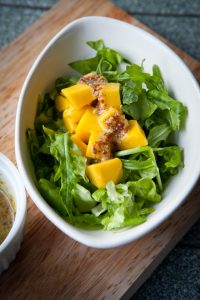 The cost of purchasing healthy foods can put many individuals off filling their baskets with nutritious products, but eating healthily does not have to hurt your pocket. In fact, data published by the Institute of Economic Affairs (IEA) found healthy foods tend to cost less than their unhealthier equivalents. With the use of digital content in its prime, there is a plethora of information out there on how to get the food you need within budget. Here are some of the best:
The cost of purchasing healthy foods can put many individuals off filling their baskets with nutritious products, but eating healthily does not have to hurt your pocket. In fact, data published by the Institute of Economic Affairs (IEA) found healthy foods tend to cost less than their unhealthier equivalents. With the use of digital content in its prime, there is a plethora of information out there on how to get the food you need within budget. Here are some of the best:
- Go local
Visit your local specialty grocery store to suss out prices – you’ll be surprised at the price you can get for groceries at greengrocers or local markets without all the elegant product packaging. The other bonus is you can buy the amount you need, saving you money on wastage as well.
- Time your shopping journey
If you’re going to a supermarket, you can save a substantial amount by capitalising on end of day sales. In many supermarkets, they’ll discount specific – typically fresh – items a few hours prior to closing time so it’s always worth attempting your luck. Although it appears like your supermarket favourites are available at petrol stations, don’t fall for the trap. YES, they are available, but at a heavily inflated price.
- Get a loyalty card
Shopping exclusively at one place because you have a loyalty card there isn’t a great idea (always opt for the cheapest rates) however if the place you frequent has the option, it’s wise to register. Not only can you gather points on your regular shop you can get exclusive deals.
- Load up your laptop
Shopping online gives you access to unique deals that you cannot necessarily get in the store and you can usually use discount rate codes, too. Another thing to note is that each product comes with its own web page content, which provides more detail than you could ever find on a supermarket shelve or even get from a worker.
- Don’t be a snob
Brands, do you see the difference between home brands of tinned tomatoes and a more costly one when it’s tossed into your breakfast omelette at your favourite all day breakfast spot? Splashing out on brands doesn’t mean anything about the quality of food,
- Do not depend on ‘super foods’ or fads to stay healthy
61% of us have reportedly purchased ‘super foods’ in a bid to stay healthy, but many experts now concur a balanced diet plan and regular workout will get the job done just as well (for less cash, too). High-cost products like coconut water or goji berries are excellent for an occasional treat, however you can still maintain a healthy diet with more affordable staples like pulses, wholegrain carbohydrates, lean protein, fresh fruit and vegetables.
- Work with the seasons
The price of purchasing a punnet of strawberries can differ depending upon the time of year, so be clever about what’s in season. Purchasing food when supply is high implies it costs to produce, but it costs less for you. Not only does it taste better in season, but you will be helping out local farmers so instead of scrambling to start crops early in the off-season, they can focus on the landscaping and grow nice, big crops when it’s in season.
- Plan ahead
If you’re serious about conserving money and being healthy, preparing your own meals is a must. Write a list before you go, keeping in mind what you’ll require for breakfast, lunch and dinner for the week ahead – that way, you will not wind up purchasing take home meals and products you simply will not use. It takes a little bit of foresight and organisation; however you’ll be delighted at how quickly the savings accumulate.
- Don’t go for snack packs
Ever found those small ‘snack-sized’ bags of nuts or fruit near the checkouts or in cafe? Buy bigger bags of whatever you want as it costs far less, and you can divide them into smaller containers or sandwich bags as and when you need them. Grocery stores and coffee shops rely on our laziness so plan ahead, and never ever shop on an empty stomach.
- Utilise that freezer
You’ve had a long day at work and go back to find absolutely nothing in the refrigerator. We’ve all been there, hello Menu log. Buying frozen fruit or vegetables is a fantastic move – it’s generally frozen with a few hours of being harvested and the freezing procedure stops dietary deficiency (a bag of frozen kale can wind up being more vitamin-packed than a fresh bag). You can freeze meals you prepare too – when you’re cooking up a hearty vegetable soup, make twice as much as you want and freeze a few portions for later.
